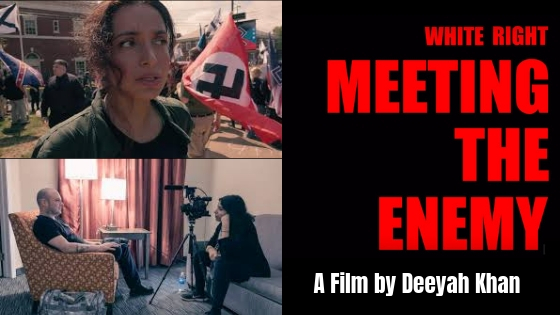“You haven’t read the review, have you?”
That was all I could politely say to the earnest representative from Kirkus Reviews. She had called me to inquire whether or not I was interested in putting some money down on ad space to promote the recent Kirkus review of my book The Selah Branch.
It’s not unusual for Kirkus or other review sites/magazines to offer ad space to books that have received favorable reviews.
The thing is, The Selah Branch had not received a favorable review.
As part of my own practice of self-care/self-preservation, once I read the negative review, I deleted it from my computer, and I chose to exercise the option not to publish the review on their site (a service Kirkus offers to small-time indie authors like myself).
It wasn’t unreasonable for the Kirkus rep to call me. I’d received very positive reviews from Kirkus before, even a Kirkus Star for my Elk Riders series. Those positive reviews earned me boatloads of credibility in writing circles and opened a lot of doors for me. I had paid to promote some of these reviews as part of previous marketing campaigns.
But this was not the case with the Kirkus review of The Selah Branch. I don’t know the name of the anonymous reviewer, but to say they didn’t like my book would be an understatement.
To the embarrassment of the rep on the phone, she pulled the review up on her internal server and began to skim it. I listened to the lengthening silence, punctuated by a series of soft “Oh . . . Oh . . . Oh,” each one sounding more deflated than the last. She was coming to realize that this reviewer had taken pains to ensure there was not a single line or even word that might be used as a pull quote—unless we resorted to using an article or conjunction.
“And,” – Kirkus Reviews;
“But,” – Kirkus Reviews;
“The,” – Kirkus Reviews;
“A,” – Kirkus Reviews.
But these were not going to do much to promote The Selah Branch.
Like I said, I’ve deleted the review. I don’t have it in front of me. But one of the adjectives used to describe The Selah Branch that really stood out to me was “bonkers.”
And the reviewer didn’t mean it in a good way. If The Selah Branch was a zany, funny book, “Bonkers” – Kirkus Reviews, might have worked as a possible pull quote. Maybe. But for a book trying to wrestle with the issues of race, racism, violence, white supremacy, and the fallout from the 2016 election, “bonkers” was not going to cut it.
“Yeah . . .” was all I could really offer in reply to the defeated words of the Kirkus rep. I tried to put on a resilient face and offered, “You win some, you lose some.”
We quickly ended the call.
Fast forward to today and The Selah Branch is my most award-winning novel.
It has won the Multicultural Fiction Book Award in the 2017 New York City Big Book Awards and the 2018 Independent Press Awards (IPA), and was a Finalist in the 2018 National Indie Excellence Awards. It was a Distinguished Favorite in the Sci-Fi category of the 2018 IPA and is now a finalist for best Sci-Fi novel in the 2018 Cygnus Book Awards.
Bonkers indeed.
This isn’t meant as an “I-told-you-so-Kirkus-na-na-na-na-na,” blog post. It is meant as an encouragement to everyone reading, whether you are a writer, musician, artist, entrepreneur . . . anyone with a passion project.
Haters gonna hate, you know?
But you can’t let them stop you if you have passion and feel confident about your idea.
And I felt confident about The Selah Branch.
A key ingredient, however, was that I wasn’t alone. I am blessed with a circle of friends and family with whom I can float ideas. Furthermore, I can trust them to give me their honest, but loving opinion.
And “love” shouldn’t be confused with “nice” or “happiness.” Those are completely different concepts. Sometimes love is frank, tough, and brutal. But that keeps us in line, on track, and growing as people and artists. For months I had been sustained by my friends and trusted fellow writers who had been telling me The Selah Branch was one of the best things I had ever written. They had some critiques, many of them well founded. But once incorporated, those notes only made the book stronger.
So, a few lessons here.
Number 1: Certainly, there is some lesson around perseverance in the face of people who can’t see your vision. Like I said before, my previous Kirkus Star really opened doors for me as a writer. I soaked that praise up. But I had to practice a sort of selective listening, dismissing the latest reviewer as a naysayer, and choosing to listen to my circle of trusted friends instead.
That selective listening, and focusing on the positive while not ruminating on the negative, would probably be lesson Number 2. Lesson Number 3 would be cultivating that circle of friends and trusted critics in the first place. We need those partners—our first readers of our rough drafts—whose input is valuable, informed, and loving. I’ve found these people in my writing friends, but not necessarily in my family. Mad love and appreciation to my parents, but they will ALWAYS be in my corner (which is a great blessing and not to be taken for granted). Mom and Dad’s unwavering support is not always the best for course correction when it comes to the nuances of a project. You probably have people like this in your life. (I hope you do!) You need both, but know how to distinguish among them. Some are cheerleaders, some are coaches. Know the difference. Discerning between them, that’s lesson Number 4.
The real takeaway is that writing, creating something that is new, original, ground breaking, challenging—all those things—well that’s damn hard. Get used to resistance, disappointment, and failure. As David Gewanter, a celebrated poet and one of my writing instructors in college, said to me, “When trying to succeed as a writer, failure means 100 percent rejection. Success is 99 percent rejection, either way, that is still a lot of rejection.”
That’s a useful ratio to remember.
Lesson Number 5: It’s good to remember the subject matter experts (SMEs) can get it spectacularly wrong. This is where I reference the record exec that turned down signing the Beatles in the 1960s telling them that “guitar bands are on the way out.” That reviewer who called The Selah Branch bonkers, well, as an SME who got it wrong, they have a lot a company.
Lesson Number 6 of all this has to do with the content and people’s ambiguous reactions to it. This has less to do with writing and more to do with being an agent of social change, which I cover a lot in this blog.
I don’t know who the reviewer was, but a part of me can’t help but wonder if they were put off by the issues raised by the book. Perhaps the reviewer was white and the pointed critiques of white fragility, white supremacy, and the tragic racist history of the US put them on the defensive. Perhaps they were a person of color and they were uncomfortable with what they saw was a white person-of-privilege, appropriating the voice of a woman of color as the protagonist.[1]
I said as much to my close friend Rasheed Newson who has written dozens of episodes of television over a ten-year career in Hollywood.[2] Unlike me, he has often had to ask the questions, “Do they not like what I wrote/said/did because I am black?” “Do they not like what I wrote/said/did because I am gay?”
“Maybe the Kirkus reviewer didn’t like the content, but maybe they were triggered by it too, by their own ‘isms,’ whatever they might be,” I said to Rasheed.
“Yes, could be all those things, could be none of them. Welcome to the carnival of oppression. You are just visiting, but some of us have lived here all our lives. Because of the distortions of these fun house mirrors, you will never really know if it’s you or if it’s them or if it’s the work.”
Then he laughed.
There are many reasons I love Rasheed, and have since I first met him over 20 years ago. But his resilience in the face of all the confusion, ambiguity, hate, and tragedy the world throws at him, has to be one of the top 5. But aside from his indefatigable sense of humor, Rasheed was modeling for me an important survival strategy, whether for writing, for leading, or life. Rasheed has learned how to cope with ambiguity. Because, along the road to realizing a dream, we rarely get clear answers, unequivocal advice, or counsel that is not contradictory or conflicting. So there, that’s lesson Number 6.
Oh yeah, and being able to laugh at yourself, keeping your sense of humor intact, and not taking yourself too seriously, that is lesson Number 7. That will help you as well as those around you. It keeps you from being insufferable.
So, to wrap up:
(1) Persevere against resistance;
(2) Practice selective listening, keeping an open mind to positive and negative critiques, but learn how not to obsess over the haters. This is important for your own self-care and in order to maintain you own personal reality-distortion-field;[3]
(3) Cultivate friendships in your life with people who are life giving, wise, trustworthy, and loving critics, they will help you practice lessons 1 & 2;
(4) Discern between cheerleaders and coaches, but listen to both;
(5) Remember SMEs can get it wrong;
(6) Learn to cope with ambiguity; and
(7) Keep your sense of humor. Don’t take yourself too seriously. Laugh—especially at yourself.
Those last four will help you keep perspective and remain centered.
Sure, maybe your idea is crap. Maybe it sucks and will turn out earning you heaps of derision and hate mail—it might do this even if has merit![4]
Or maybe, just maybe, your baby is brilliant and just needs you and some well selected friends to believe in it.
But most of all, you.
Keep writing my friends.
_______________________________________________________________
[1] I’ve written about this here: https://www.tenebraypress.com/new-blog/2018/9/13/the-selah-branch-love-it-or-hate-it-but-nobody-likes-it-part-two; And here: https://www.tenebraypress.com/new-blog/2018/9/1/the-selah-branch-love-it-or-hate-it-but-nobody-likes-it; And here: https://www.tenebraypress.com/new-blog/2018/6/28/writing-characters-of-color-when-you-are-a-cis-gender-white-heterosexual-male
[2] I know what you are thinking: “Here he goes again, trotting out his gay, black friend, as a cover for his hopeless, uninformed privilege.” Yeah, I’m probably guilty of that. You can stop reading at any point if you want or you can continue hate-reading, too, and then text your friends about what a jerk I am and how I just don’t get it. Up to you, but be sure to link to the offending blog post. Link is here: https://www.amazon.com/Ted-Neill/e/B00O5J5FZC/ref=sr_ntt_srch_lnk_1?qid=1544469446&sr=8-1
[3] https://en.wikipedia.org/wiki/Reality_distortion_field
[4] Ha-ha! Welcome to the world of artistic expression!










